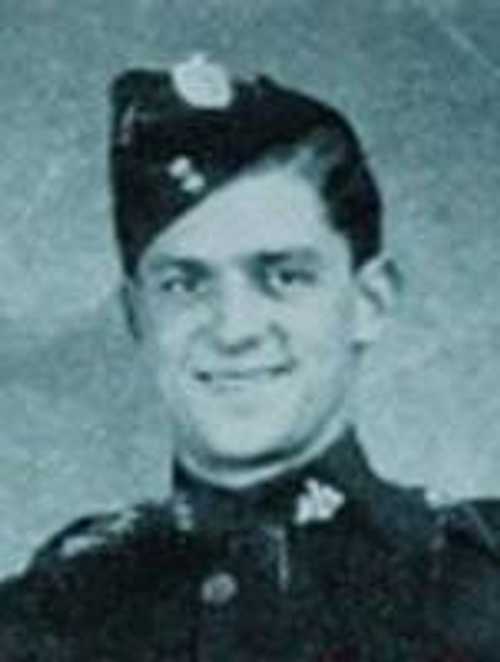
Canadian Forces
Private Pringle
fbbrummbar
The Execution of Private Pringle - Canadian Soldier On a warm, sunny morning, 5 July 1945, not far from the Italian village of Avellino, Canadian Pte. Harold Joseph Pringle was brought from a makeshift cell in a war-ravaged castle, taken to a deserted firing range once used by the Mussolini youth wing for target practice, bound to a wooden post, and shot. For deserting the military and for having been found guilty of murdering a fellow soldier, 23-year-old Harold Pringle paid with his life -- a penalty exacted on no other Canadian soldier during the war. For many years afterward the military insisted that there were no executions carried out at all during the war. The young man from Flinton, Ont., a tiny rural community north of Napanee, lied about his age at the beginning of the war so he could enlist with his father -- a marksman proud of his service in the First World War. But 16-year-old Harold grew into a thorn in the side of the military. Although he demonstrated fierce courage in battle, he had both a temper and a frequent propensity to go on leave and not return. He was a deserter who got caught, again and again. Neither fines nor military prison time deterred him, particularly when it came to visits with girlfriends. His penchant for taking off would not help him when he found himself charged with the murder of a fellow Canadian soldier and friend named John (Lucky) McGillivary, found shot to death outside Rome in late 1944. The two had been part of a small group of deserters called the Sailor Gang, who fled battle for Rome and ran a healthy racket in black-market goods. Pte. Pringle and two British gang members who were also charged, argued their companion's death was an accident -- that he was mistakenly shot in the liver during a drunken tussle with one of them, then died on the way to hospital. Pte. Pringle admitted to shooting his friend in the chest, but only after he was dead -- and only as part of a plan to make it look like the soldier was killed by the Mafia. But the military refused to believe it.Pte. Pringle and the Britons were each court-martialed and sentenced to death. Some believe that the Canadian government had written off their young soldier as a troublesome deserter and that Pte. Pringle was doomed from the moment he was charged. Yet the case raises more questions than it solves. Authorities yanked an experienced lawyer with an impressive record of acquittals first assigned to Pte. Pringle's defence, replacing him with a lawyer who had never tried a case before and had just seven days to prepare a defence. His original lawyer, years later, stated that "I can't believe they found him guilty. There was reasonable doubt a mile wide." The chief witness against Pte. Pringle, a former associate, was given immunity from prosecution in the killing in return for his testimony. He gave four separate and inconsistent statements about what happened that night. A Canadian colonel who reviewed Pte. Pringle's petition of appeal shared with his colleagues his belief that Lucky McGillivary was already dead before he was shot in the head and chest. As well, a highly respected British pathologist,at the time, who put forward his opinion that McGillivary was killed by the shot to the head turned out to be "mentally spent" at the time and later committed suicide. The Canadian government seemed intent to see the execution through -- though it was delayed for months until Prime Minister King was re-elected. No one, it seems, thought it a wise idea to execute a Canadian soldier after the war and while an election campaign was under way. But soon after the 1945 election was over, the prime minister met with one of his advisers and discussed the case. According to the book, Mr. King was told that eight other soldiers had also been convicted of murder during the war but had death sentences commuted. There was a wrinkle in this case, though: Two British soldiers had already been put to death after being convicted in the same murder, and it might anger the British government if the Canadian were to be spared. However, if the Canadian public found out about the execution, there would be trouble at home. So the book says King agreed to a plan that would see the death sentence carried out in a remote area of Italy in absolute secrecy. All involved would be prohibited from talking about it, and all records about it would be sealed. According to a book written by Andrew Clark, A Keen Soldier: The Execution of Second World War Private Harold Pringle,even the Canadian Military was insistent that no Canadian soldier had been executed during World War 2. When Mr. Clark told them what files to look at they were quite astonished. One soldier who was in Private Pringle's regiment remembered him as follows:"Harold was a brave bugger, you know.He was to be shot sitting in a chair and he had the choice of sitting facing away from the firing squad. But he chose to sit facing them and with no blindfold. He walked in and almost took over, you know. He told the squad, 'Come on, do what you've got to do. Let's get it over with.' taken from fb/Canada's Military History
1933 Views
12/19/2019
